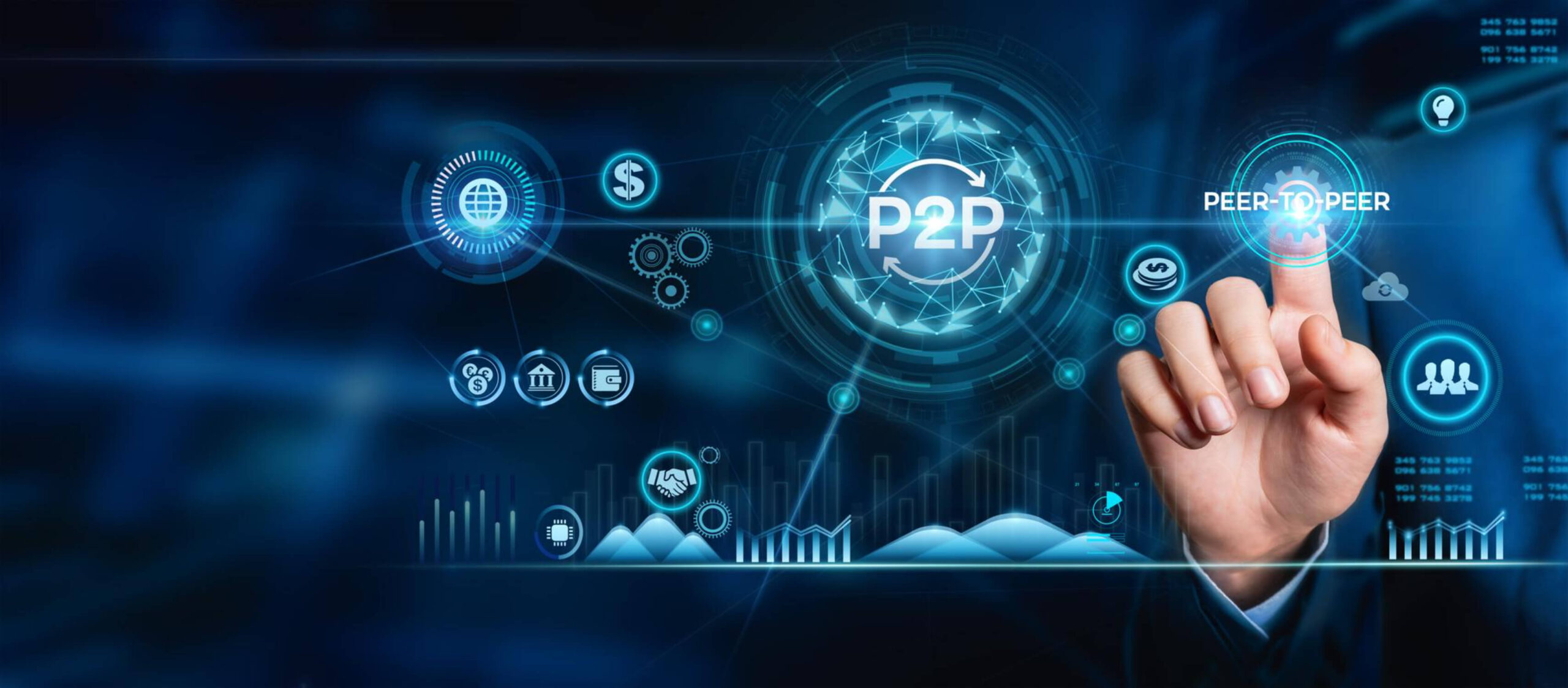
Peer-to-Peer (P2P) Lending Platform Development: The Future of Personal Finance
In this world of the latest technological innovations, the fintech sector is one of the top-growing industries globally. All its credit goes to the latest innovations in this sector. We all have now experienced that almost every finance-related task can be done with ease using smart devices like smartphones, laptops, tablets, or desktops. One of the latest tech innovations in terms of the fintech app solution is P2P lending systems.
This Peer-to-Peer lending is a completely modernized way of borrowing funds from other individuals or financial institutions using an online platform. The financial landscape is evolving at an unprecedented pace, driven by technological advancements that are reshaping traditional banking and lending models. One such innovation that has gained significant traction is Peer-to-Peer (P2P) lending fintech development. P2P lending has emerged as a disruptive force in the financial industry, redefining how individuals and small businesses access loans and invest their money.
In this article, we deeply introduce the concept of P2P lending, its benefits and challenges, and why it is considered the future of personal finance. There are a lot of myths and other delusions when it comes to the P2P lending sector. Still, fintech app development companies in USA are trying to enhance this lending user experience with increased efficiency.
Understanding the P2P Lending System Concept
Peer-to-peer lending, often referred to as social lending or crowdlending, is a decentralized financial model that connects borrowers directly with lenders through online platforms. These platforms act as intermediaries, facilitating loan transactions without the involvement of traditional financial institutions like banks. P2P lending leverages technology to streamline the lending process, making it efficient, transparent, and accessible to a broader range of participants. This P2P platform acts as a mediator that lets the investors meet the borrowers to make them lend their desired amount of money, depending on their creditworthiness. That’s the reason why it is considered as the social lending of money to the people who need it.
Benefits of P2P Lending Platforms
- Easy Access to Capital: P2P lending addresses a common issue faced by individuals and small businesses is difficulty in securing loans from traditional banks. P2P platforms provide an alternative funding source, enabling borrowers to access capital quickly and with less stringent criteria.
- Attractive Returns for Investors: On the flip side, P2P lending offers an opportunity for investors to earn attractive returns on their capital by lending to a diversified pool of borrowers. This model allows individuals to become lenders and earn interest on the funds they provide.
- Diversification: P2P lending platforms allow investors to diversify their investment portfolio across multiple loans, reducing the risk associated with lending to a single borrower. Using this Peer-to-peer P2P software investors can easily lend the money in terms of investments to different borrowers at a particular point in time.
- Technological Efficiency: The digital nature of P2P lending eliminates the need for a physical presence. Borrowers can apply for loans and investors can participate from the comfort of their homes, making the entire process more convenient and efficient. Peer-to-peer lending P2P is a combination of both automated and software systems that enhance the lending process, for both the borrower and investor.
- Transparency: P2P platforms utilize technology to provide transparency in terms of interest rates, fees, and terms. Borrowers and lenders can make informed decisions based on readily available information. This is considered the best software personal finance mechanism for users that allows them to maintain transparency with complete security.
- Financial Inclusion: P2P lending promotes financial inclusion by reaching borrowers who may be underserved or excluded by traditional financial institutions. This can have a positive impact on socioeconomic development. Not only the socioeconomic development but also the overall financial sector is benefitted by the P2P lending systems.
Challenges of P2P Lending
- Risk Management: The absence of traditional underwriting processes necessitates robust risk assessment mechanisms. P2P platforms employ credit scoring, data analysis, and AI algorithms to evaluate borrower creditworthiness. This might sometimes cause serious issues for both the borrowers and investors.
- Regulatory Environment: P2P lending operates using particular rules and regulations which may sometimes cause issues to its users. In some regions. Striking a balance between innovation and protecting consumers/investors is crucial for its sustainable growth.
- Scams & Fraudulent Practices: Using these fintech app development services, can sometimes prove to be more risk-oriented for the users. Just because there are several borrowers who might opt for fraudulent practices for lending a particular sum of money from investors. This can cause huge financial losses to the investors.
Future Prospects Of P2P Lending Systems
Peer-to-peer lending platform development has carved a revolutionary path in the realm of personal finance. With its potential to democratize lending and investing, provide access to capital for the underserved, and reshape traditional financial models, P2P lending is poised to play an instrumental role in the financial landscape of the future. However, it’s imperative for all stakeholders, borrowers, investors, platforms, and regulators to work collaboratively to ensure its growth is sustainable, transparent, and beneficial for all. As technology continues to advance, the vision of decentralized, inclusive, and efficient fintech app solutions through P2P lending seems closer than ever before. Since it is a combination of both the individuals and the Fintech app development services providing the users with the most efficient and secure future platforms for both lending and investment purposes.



